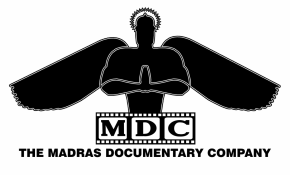Arulmigu Mundagakanniamman Temple |
Third Party Video
|
Deep inside the small streets of Mylapore in Chennai is located an ancient shrine. The shrine is said to be over 1300 years old. This is the shrine of Arulmigu Mundagakanniammman.
Ancient Tamil literature speaks of the practice of worship of a mother Goddess who ensures great victory in battle. Before every war the soldiers used to perform elaborate worship to the Goddess praying for victory. This type of worship existed during the age of “Tholkappiam” and “Silapathikaram” was called “Kottravai worship”. Arulmigu Mundagakanniammman temple is also presumed to have worshiped as “Kottravai” victory Goddess at one time. As to the origins of the temple we learn that at the location of the temple there existed a lotus pond. Under the Banyan tree on the banks of this pond, Ambal manifested herself in swayambu or not carved by man, but has a celestial and natural origin. The Ambal figure was enclosed in a hut like structure and worshiped. If you visit the shrine you will see that the main deity is still covered by a hut. In spite of a large concrete structure covering the temple, Ambal still is enclosed in a hut. The belief is that She has not yet given permission to enclose Her in any other manner. Ambal while living in the hut symbolizes simplicity. Ambal’s swayambu form resembles a lotus bud. In Tamil ‘Mundakam’ means ‘lotus’. The significant feature is of the trident, the primary weapon of Devi, seen at the center of the swayambu form. Goddess Mundakanni Amman is said to have the powers of Shiva, Vishnu and Brahma. While She is a manifestation of Goddess Saraswathi, Amman appears with twin arms and donned with serpent crown. Behind the shrine is a banyan Tree. It is said that an ancient snake resides in the ant hill under the tree. The snake comes out every night and worships the Ambal. Ambal's close association with the Naga deity gives Her the power to cure the devotees of Naga Dosham or the serpent-curse. Devotees worship at the temple to get relief from many different troubles like chicken pox, eye diseases, success in education and profession and to be able to find a life partner. Amman is also said to protect her devotees from evil spells, curses, occults and other influences of bad spirits. The popular forms of worship are:
The main prasaadam distributed to the devotees are..... neem leaves, consecrated lime fruits, turmeric, Vibuthi and holy water that are offered to Amman during prayer. A majority of the devotees are women. The temple celebrates many yearly events in the holy months of the Tamil calendar including Aadi Pooram, Chitra Pournami, Chithirai , Vijaya Dasami and last Friday of Thai Masam (January-February) Entering the temple we see the main sanctum of Ambal. On the right side are the Saptakannikas or the seven virgins viz. Brahmi, Maheswari, Vaishnavi, Varahi, Kaumari, Indirani and Chamundi. It is believed that women facing adverse influence from snake curse and serpent planets, worship here to get relief. On the left of the main sanctum, the Utsava Murthy or the procession Ambal is located. She is seated on a throne, flanked on both sides with Simha Vahanam – lion carriers. In the prakaaram are the sapta kannikas appearing in the linga form. Jamadagni Maharishi and his son Parasuramar are seen as security gods on both their sides of the santum. In front of the temple is Lord Vinayaka under the pipal tree. This tree is the spot where the devotees install Naga Idols. The site of the temple is also the birth place of several holy saints like Vaayilaar, one of the Nayanmar and Peyaalvaar and several poets like Elam pon vaniganar, Eane Cherimudhamosiar, kallian kumaran, Siruganthan, Palshayanar and Maruthuvan Thamodharan. The temple is administered by The Hindu Religion Charitable Endowment Department Tamil Nadu. _ |

